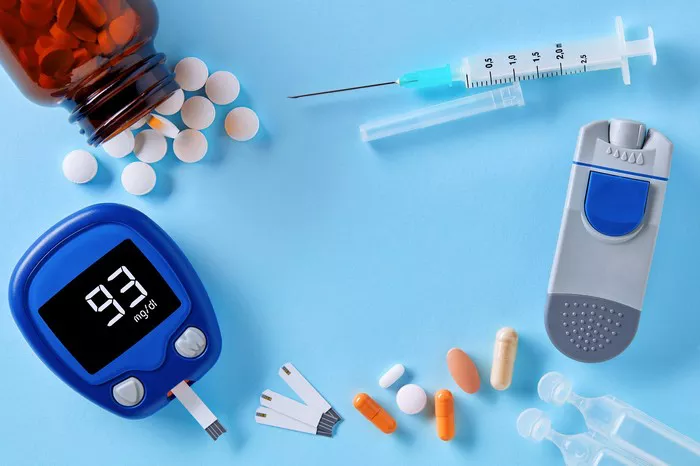In the realm of diabetes management, two key metrics often take center stage: blood glucose levels and A1C (glycated hemoglobin) levels. While both are crucial indicators of glycemic control, they serve distinct purposes and provide complementary insights into an individual’s diabetes management. In this article, we explore the fundamental differences between glucose levels and A1C, their significance in diabetes care, and how healthcare providers and individuals with diabetes can leverage them for optimal glycemic management.
1. Glucose Levels:
Blood glucose levels, also known as blood sugar levels, represent the concentration of glucose (sugar) present in the bloodstream at a given time. Glucose is the body’s primary source of energy, derived from the digestion and breakdown of carbohydrates consumed in the diet. In individuals without diabetes, blood glucose levels are tightly regulated within a narrow range, primarily through the action of insulin, a hormone produced by the pancreas.
- Measurement: Glucose levels are typically measured in milligrams per deciliter (mg/dL) or millimoles per liter (mmol/L) using a glucose meter and fingerstick blood samples. Blood glucose monitoring allows individuals with diabetes to track their glucose levels throughout the day, including fasting (before meals), postprandial (after meals), and at various intervals, such as before and after exercise or bedtime.
- Variability: Blood glucose levels can fluctuate throughout the day in response to various factors, including carbohydrate intake, physical activity, stress, illness, medications, and insulin therapy. Fluctuations in blood glucose levels can lead to hyperglycemia (elevated blood sugar) or hypoglycemia (low blood sugar), both of which can have adverse effects on health and well-being if left unmanaged.
- Significance: Monitoring blood glucose levels is essential for individuals with diabetes to assess their glycemic control, make informed decisions about insulin doses and medication regimens, and prevent acute complications, such as hypoglycemia and hyperglycemia. Target blood glucose ranges may vary based on individualized treatment goals, age, comorbidities, and diabetes management strategies.
2. A1C (Glycated Hemoglobin):
A1C, or glycated hemoglobin, is a measure of the average blood glucose levels over the preceding two to three months, reflecting long-term glycemic control. Hemoglobin, a protein found in red blood cells, binds to glucose molecules in the bloodstream to form glycated hemoglobin. The percentage of hemoglobin that becomes glycated is proportional to the average blood glucose levels over time.
- Measurement: A1C levels are expressed as a percentage of total hemoglobin and are typically measured using a blood test performed in a clinical laboratory. A1C testing provides a comprehensive assessment of glycemic control over an extended period, offering insights into overall diabetes management and the risk of developing diabetes-related complications.
- Long-Term Control: Unlike self-monitoring of blood glucose (SMBG), which provides snapshots of blood glucose levels at specific points in time, A1C testing offers a broader perspective of glycemic control over several weeks to months. A1C levels reflect both fasting and postprandial glucose levels and are less susceptible to short-term fluctuations in blood glucose levels due to factors such as meals, exercise, or stress.
- Risk Stratification: A1C levels serve as an important tool for risk stratification and prognosis in individuals with diabetes, helping healthcare providers assess the risk of developing diabetes-related complications, such as retinopathy, nephropathy, neuropathy, cardiovascular disease, and stroke. Lowering A1C levels to target ranges reduces the risk of long-term complications and improves overall health outcomes in individuals with diabetes.
3. Differences and Complementary Roles:
While blood glucose levels and A1C both provide valuable insights into glycemic control, they serve distinct purposes and offer complementary information for diabetes management:
- Temporal Resolution: Blood glucose levels offer real-time information about glycemic status, allowing individuals to make immediate adjustments to insulin doses, carbohydrate intake, and lifestyle factors. In contrast, A1C provides a retrospective assessment of glycemic control over an extended period, offering a more comprehensive view of overall diabetes management.
- Short-Term vs. Long-Term Control: Blood glucose levels reflect short-term glycemic fluctuations and trends, while A1C reflects long-term average blood glucose levels. Both metrics are important for assessing glycemic control and guiding treatment decisions, with blood glucose monitoring informing day-to-day management and A1C testing providing a broader assessment of overall control.
- Clinical Utility: Blood glucose monitoring is essential for day-to-day diabetes management, including adjusting insulin doses, identifying patterns, and preventing acute complications. A1C testing complements blood glucose monitoring by providing a measure of long-term glycemic control, guiding treatment goals, and assessing the risk of complications over time.
4. Conclusion:
In conclusion, blood glucose levels and A1C are key metrics in diabetes management, providing valuable insights into glycemic control and overall health outcomes. While blood glucose monitoring offers real-time information about glycemic status and informs day-to-day management decisions, A1C testing provides a retrospective assessment of long-term glycemic control and guides treatment goals and risk stratification for diabetes-related complications.
Healthcare providers and individuals with diabetes can leverage both blood glucose levels and A1C to optimize diabetes management, tailor treatment regimens, and reduce the risk of acute and chronic complications. By incorporating comprehensive strategies for monitoring, assessment, and intervention, individuals with diabetes can achieve and maintain optimal glycemic control, improve quality of life, and reduce the risk of long-term complications associated with diabetes.

























